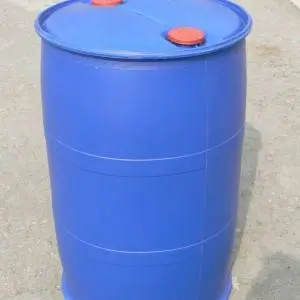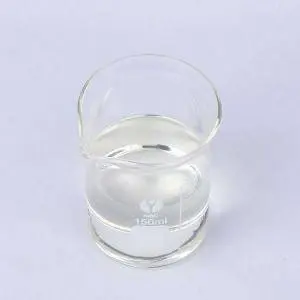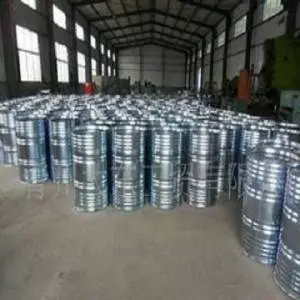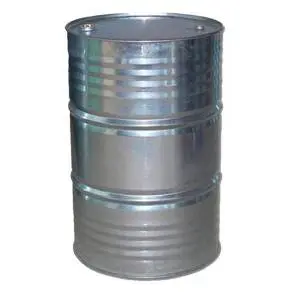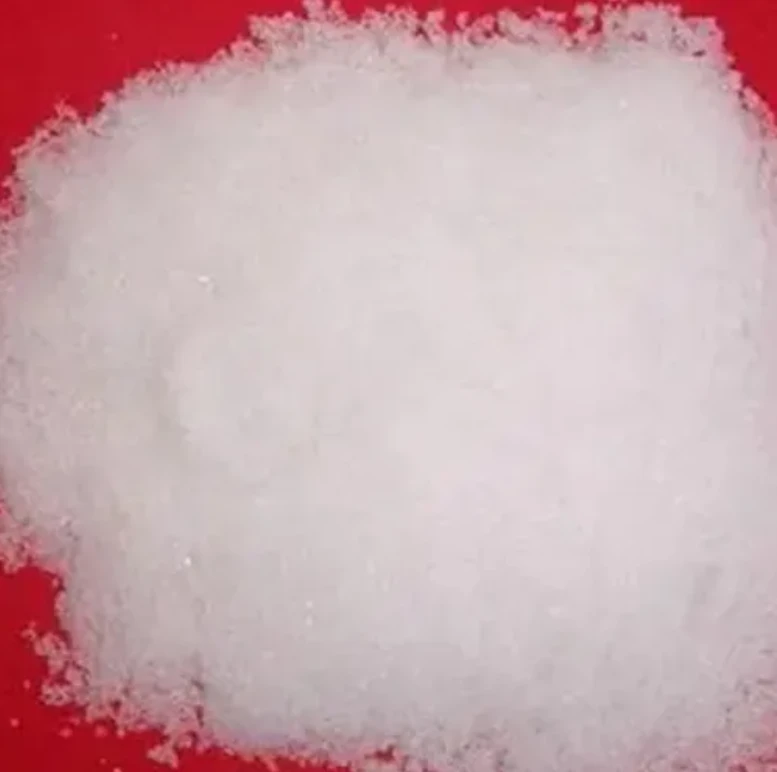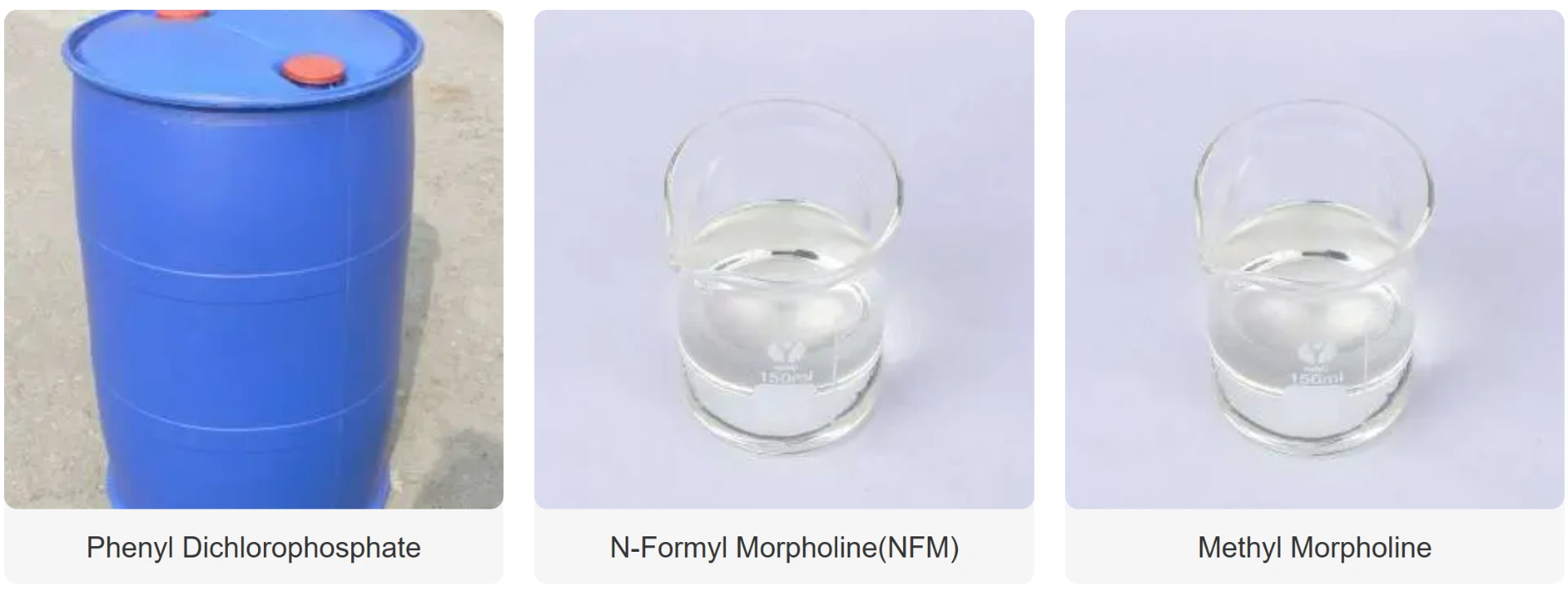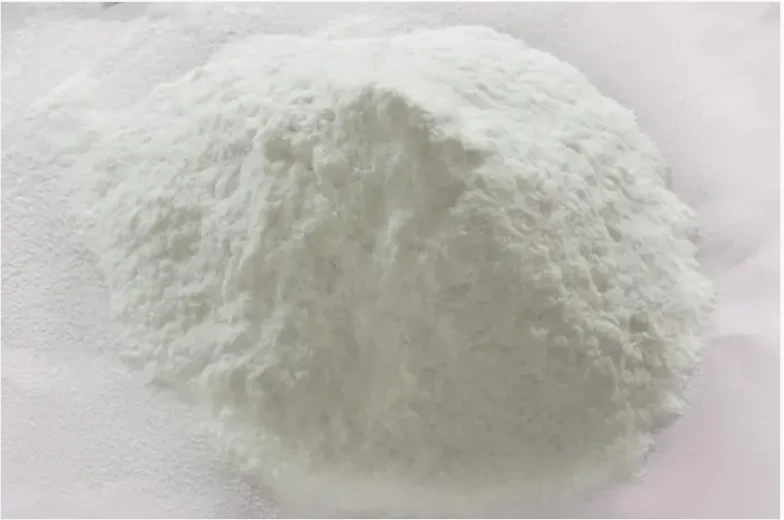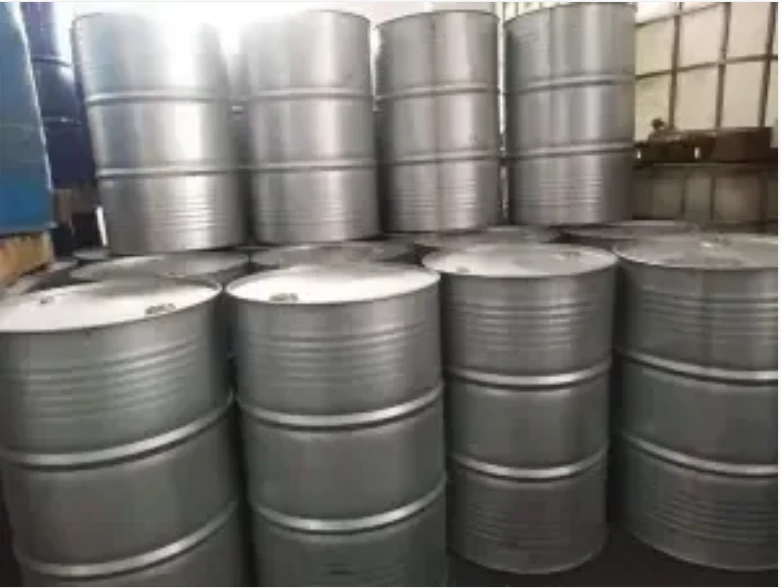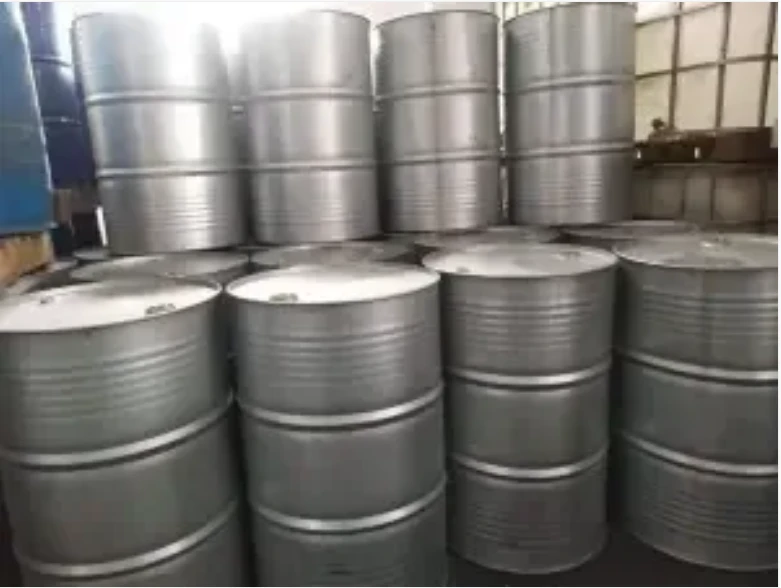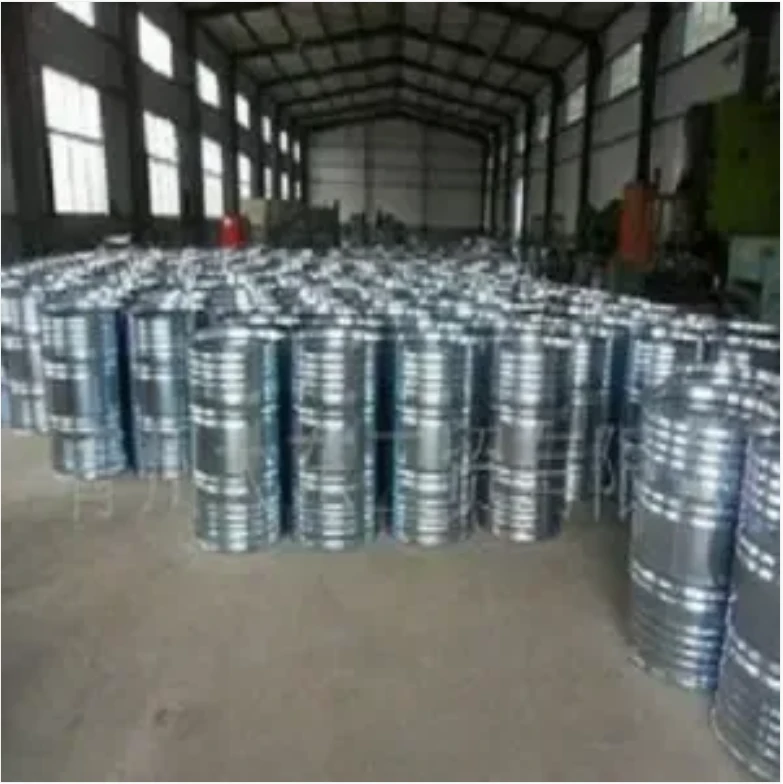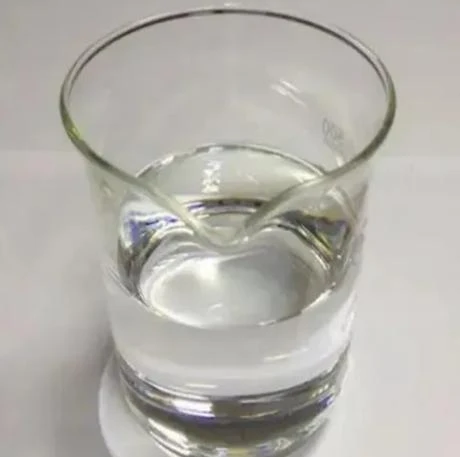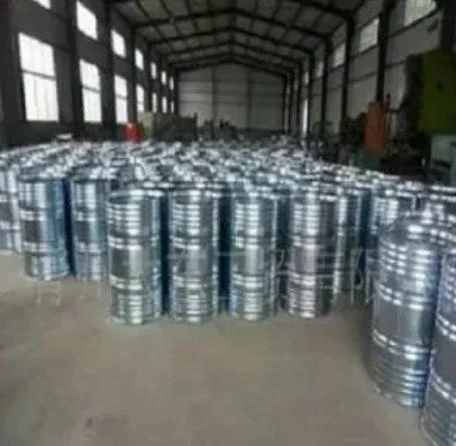High-Purity 3-Methylpiperidine: CAS 626-56-2 | Chemical Synthesis
Unlocking Potential: The Strategic Importance of 3-Methylpiperidine in Advanced Chemical Synthesis
In the intricate landscape of modern chemical manufacturing, the demand for highly specialized building blocks is ceaselessly escalating, driven by innovations across pharmaceuticals, agrochemicals, and materials science. Among these pivotal compounds, 3-Methylpiperidine stands out as a versatile and indispensable cyclic amine, playing a critical role in the synthesis of complex molecules. This compound, characterized by its piperidine ring structure with a methyl substituent at the 3-position, offers unique steric and electronic properties that are highly sought after in sophisticated organic reactions. Its significance transcends mere chemical utility, extending into strategic advantages for companies looking to optimize their synthesis routes, enhance product purity, and accelerate time-to-market for novel compounds. The increasing sophistication of drug discovery, for instance, necessitates chiral auxiliaries and highly specific reagents that can facilitate targeted reactions with exceptional enantioselectivity, areas where 3-Methylpiperidine frequently proves invaluable. Beyond pharmaceuticals, its derivatives are explored in the development of advanced polymer additives, specialized coatings, and even as intermediates for certain types of fuel additives, underscoring its broad industrial applicability. The global chemical industry is currently experiencing a profound shift towards sustainable practices and higher purity standards, compelling manufacturers to invest in high-quality raw materials like 3-Methylpiperidine that can minimize by-products and enhance overall process efficiency. This trend is not merely regulatory-driven but also an economic imperative, as improved efficiency directly translates to reduced operational costs and a stronger competitive edge. Furthermore, the burgeoning field of specialty chemicals, often requiring bespoke synthesis pathways, relies heavily on the precise reactivity profiles offered by compounds such as 3-Methylpiperidine. As a result, understanding its technical specifications, manufacturing intricacies, and diverse applications becomes paramount for B2B stakeholders, including R&D chemists, procurement managers, and production engineers who aim to leverage cutting-edge chemical solutions for their respective industries. The ability to source a high-purity, consistently manufactured 3-Methylpiperidine is often a determining factor in the success of complex synthesis projects, impacting everything from reaction yield to the final product's efficacy and safety profile. This article delves deep into the multifaceted aspects of 3-Methylpiperidine, providing a comprehensive guide for industry professionals seeking to harness its full potential.
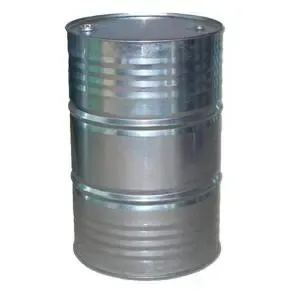
The prevailing industry trends further amplify the demand for high-quality chemical intermediates. With a global push towards personalized medicine and advanced materials, the complexity of target molecules is increasing, requiring intermediates that offer both reactivity and selectivity. 3-Methylpiperidine, with its unique structural characteristics, is perfectly positioned to meet these escalating demands. Its capacity to participate in diverse reaction types, including nucleophilic substitutions, alkylations, and as a chiral auxiliary, makes it a cornerstone in the development of novel active pharmaceutical ingredients (APIs) and fine chemicals. Moreover, the emphasis on green chemistry principles is prompting a re-evaluation of synthesis routes to reduce solvent usage, energy consumption, and waste generation. In this context, selecting high-purity starting materials like 3-Methylpiperidine can contribute significantly to achieving these sustainability goals by minimizing purification steps and improving overall atom economy. The shift towards batch-to-batch consistency and stringent quality control, driven by regulatory bodies like FDA and EMA, also places a premium on suppliers who can guarantee the integrity and purity of their chemical products. This ensures that downstream processes are predictable and reliable, mitigating risks associated with impurity profiles that can lead to costly rework or product recalls. Furthermore, the rapid pace of innovation in sectors like biotechnology and specialty polymers means that R&D pipelines are constantly in need of new chemical tools. 3-Methylpiperidine, through its derivatization capabilities, provides a rich platform for creating novel compounds with tailor-made properties, from improved thermal stability in polymers to enhanced biological activity in drug candidates. The market for high-performance chemical intermediates is highly competitive, and manufacturers who can offer superior quality, reliable supply chains, and excellent technical support are the ones poised for long-term success. Understanding the nuances of 3-Methylpiperidine, from its precise molecular parameters to its versatile applications, is thus not just a matter of chemical knowledge but a strategic business imperative. It represents an opportunity to unlock new product development avenues, optimize existing production lines, and solidify a position at the forefront of chemical innovation. This comprehensive overview aims to equip stakeholders with the necessary insights to make informed decisions regarding the procurement and utilization of this vital chemical intermediate, ensuring that their ventures are built on a foundation of chemical excellence and strategic foresight.
Technical Parameters and Specifications of 3-Methylpiperidine
The efficacy and applicability of any chemical intermediate are fundamentally determined by its intrinsic technical parameters and the stringent specifications to which it conforms. For 3-Methylpiperidine, a clear understanding of these attributes is critical for ensuring its successful integration into diverse synthesis pathways and for meeting the demanding quality requirements of regulated industries. Chemically, 3-Methylpiperidine (CAS No. 626-56-2) presents as a clear to pale yellow liquid with a characteristic amine odor. Its molecular formula is C6H13N, and it has a molecular weight of approximately 99.17 g/mol. A key physical property is its boiling point, typically ranging from 124-126 °C at standard atmospheric pressure, which is crucial for distillation and purification processes. The density of 3-Methylpiperidine is around 0.82 g/mL, a factor important for volumetric measurements and process calculations. In terms of solubility, it is miscible with common organic solvents such as ethanol, diethyl ether, and chloroform, and partially soluble in water, a characteristic that influences reaction work-up procedures and purification strategies. The purity of 3-Methylpiperidine is paramount, especially for pharmaceutical and fine chemical applications, and is typically specified at 99.0% or higher, as determined by Gas Chromatography (GC) analysis. Impurity profiles, including water content (measured by Karl Fischer titration) and other volatile organic impurities, are tightly controlled to ensure optimal reaction performance and minimize side reactions. For instance, even trace amounts of certain impurities can catalyze undesired pathways or poison sensitive catalysts in complex syntheses. The refractive index (n20D) and infrared (IR) spectroscopy data are also vital for quality control, providing quick and reliable methods for verifying the compound's identity and assessing its batch-to-batch consistency. Furthermore, the presence and ratio of its stereoisomers (R and S forms) are critical for applications requiring chiral specificity. While 3-Methylpiperidine itself is not inherently chiral at the carbon containing the methyl group, its derivatives can exhibit chirality, making the parent compound's structural integrity and purity crucial for downstream chiral syntheses.
Adherence to international standards and internal quality protocols is not just a matter of compliance but a cornerstone of reliability and trustworthiness for suppliers of 3-Methylpiperidine. Reputable manufacturers typically provide a Certificate of Analysis (CoA) with each batch, detailing purity, moisture content, heavy metal limits, and other relevant specifications. These CoAs are often accompanied by analytical data from techniques like GC-MS (Gas Chromatography-Mass Spectrometry) for a comprehensive impurity profile, and NMR (Nuclear Magnetic Resonance) spectroscopy for structural confirmation. Safety data sheets (SDS) are also critical, outlining handling precautions, storage conditions, and emergency procedures, as 3-Methylpiperidine, like many amines, can be corrosive and flammable. The typical packaging for 3-Methylpiperidine involves steel drums or specialized chemical container111s designed to prevent leakage and maintain product integrity, often with nitrogen blanketing to prevent oxidation. Storage conditions usually specify cool, dry, and well-ventilated areas, away from ignition sources and incompatible materials like strong acids or oxidizing agents. The shelf life under these conditions is generally at least 12-24 months, but retesting before use for older batches is a common practice in quality-conscious laboratories. For applications in highly regulated industries, such as pharmaceutical manufacturing, suppliers must also demonstrate compliance with relevant Good Manufacturing Practice (GMP) guidelines or equivalent quality management systems, ensuring traceability from raw material sourcing to final product packaging. This level of transparency and quality assurance builds significant trust with B2B clients, who rely on consistent product quality to maintain their own production schedules and regulatory compliance. The table below summarizes typical technical parameters for high-grade 3-Methylpiperidine, providing a quick reference for procurement and R&D teams. This data, coupled with a deep understanding of its chemical behavior, allows users to predict its performance in various reactions, from simple alkylations to complex multi-step syntheses requiring precise control over stereochemistry and regioselectivity. The precision in these parameters directly translates to higher yields, reduced purification efforts, and ultimately, a more cost-effective and efficient production process.
Typical Technical Specifications of 3-Methylpiperidine
| Parameter | Typical Value/Specification | Test Method |
|---|---|---|
| CAS Number | 626-56-2 | N/A |
| Molecular Formula | C6H13N | N/A |
| Molecular Weight | 99.17 g/mol | N/A |
| Appearance | Clear to pale yellow liquid | Visual |
| Purity (GC) | ≥ 99.0% | GC-FID |
| Water Content | ≤ 0.1% | Karl Fischer |
| Boiling Point | 124-126 °C (lit.) | Literature/Experimental |
| Density (20°C) | ~0.82 g/mL | Pycnometer |
| Refractive Index (n20D) | ~1.446 - 1.448 | Refractometer |
| Residue on Ignition | ≤ 0.05% | USP |
Manufacturing Process: From Raw Material to High-Purity 3-Methylpiperidine
The production of high-quality 3-Methylpiperidine is a sophisticated chemical engineering endeavor that requires precision at every stage, from raw material sourcing to final purification and packaging. While specific proprietary methods vary among manufacturers, the general synthetic pathway for 3-Methylpiperidine typically involves the cyclization and reduction of precursors, often commencing from pyridine derivatives or other nitrogen-containing cyclic compounds. One common route involves the catalytic hydrogenation of 3-methylpyridine (3-picoline). In this process, 3-picoline is reacted with hydrogen gas in the presence of a suitable catalyst, such as Raney nickel, palladium on carbon (Pd/C), or ruthenium-based catalysts. This reaction is carried out under specific conditions of temperature and pressure, typically elevated temperatures (e.g., 100-200 °C) and pressures (e.g., 5-50 bar), to ensure efficient conversion and selectivity. The choice of catalyst is critical, as it influences reaction rates, selectivity towards the desired product, and the minimization of undesirable side reactions, such as ring-opening or over-reduction. For instance, selective hydrogenation conditions are essential to avoid the formation of completely saturated aliphatic amines or other piperidine isomers. The reactor design plays a crucial role; fixed-bed catalytic reactors or stirred tank reactors are commonly employed, depending on the scale and specific process requirements. Robust materials of construction, such as stainless steel alloys, are mandated to withstand the corrosive nature of the reactants and products, as well as the high-pressure conditions, ensuring both operational safety and product integrity. Post-reaction, the crude product mixture undergoes a series of purification steps. These often include filtration to remove catalyst particles, followed by distillation under reduced pressure to separate 3-Methylpiperidine from unreacted starting materials, higher boiling by-products, and any residual solvents. Fractional distillation is a particularly effective method for achieving high purity, leveraging the differences in boiling points of the components. Multiple distillation passes might be required to meet stringent purity specifications (e.g., 99.5% or higher) demanded by pharmaceutical and specialty chemical industries. The product material, often a clear liquid, is then subjected to rigorous quality control tests.
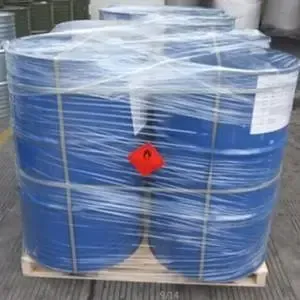
Beyond the core synthesis, the entire manufacturing ecosystem is governed by strict quality management systems, often aligned with international standards such as ISO 9001:2015. This comprehensive framework encompasses raw material inspection, in-process quality control, final product testing, and meticulous record-keeping. Raw materials, such as 3-picoline and hydrogen, must meet specific purity criteria themselves to prevent the introduction of impurities into the final product. For instance, if the starting 3-picoline contains isomers or other nitrogen-heterocycles, these could lead to difficult-to-separate impurities in the final 3-Methylpiperidine. In-process monitoring includes regular sampling and analysis of the reaction mixture to track conversion rates, identify the presence of intermediates, and ensure the reaction progresses as expected. Techniques like GC and HPLC (High-Performance Liquid Chromatography) are routinely used for this purpose. The manufacturing process also considers environmental and safety standards. Emissions are controlled, waste is managed responsibly, and all operations adhere to strict occupational safety guidelines, including those mandated by local and international bodies like OSHA or REACH regulations in Europe. For specialized applications, such as pharmaceutical intermediates, the manufacturing facility may need to comply with specific cGMP (current Good Manufacturing Practice) guidelines, which impose even more rigorous controls on facility design, equipment qualification, personnel training, and documentation. This ensures that the 3-Methylpiperidine produced is not only chemically pure but also manufactured in a reproducible and controlled environment, crucial for its use in drug synthesis. The typical lifespan of a well-manufactured batch of 3-Methylpiperidine, when stored under recommended conditions (cool, dry, dark, inert atmosphere), can extend beyond two years, although retesting prior to use is a standard industry practice for materials nearing the end of their specified shelf life. The applicable industries for such a high-quality product are vast, ranging from petrochemicals (e.g., as corrosion inhibitors or fuel additives), metallurgy (e.g., in extraction processes), to water treatment (e.g., as an intermediate for flocculants). Its advantages in typical application scenarios often revolve around its excellent solvent properties, its basicity for neutralization or catalysis, and its ability to act as a building block for more complex structures. For instance, in corrosion inhibition, the amine functionality of 3-Methylpiperidine can interact with metal surfaces, forming a protective layer that prevents oxidative degradation. In complex organic synthesis, its high purity reduces the need for extensive downstream purification, contributing to energy savings and reduced waste generation. The consistent manufacturing of high-purity 3-Methylpiperidine is thus a testament to advanced chemical engineering capabilities, ensuring reliable supply for critical industrial applications.
Key Applications and Industry Relevance of 3-Methylpiperidine
The versatility of 3-Methylpiperidine as a chemical intermediate extends across a broad spectrum of industries, underpinning its critical role in advanced manufacturing and R&D. Its unique cyclic amine structure, combined with the presence of a methyl group, imparts specific chemical properties that make it highly desirable for synthesizing complex organic compounds. One of its most prominent applications is in the pharmaceutical industry, where it serves as a crucial building block for the synthesis of various active pharmaceutical ingredients (APIs). Many drugs rely on a piperidine core structure for their pharmacological activity, and the introduction of a methyl group at the 3-position can significantly influence binding affinity, metabolic stability, and pharmacokinetic profiles. For instance, derivatives of 3-Methylpiperidine are found in medications targeting the central nervous system, such as antipsychotics, antidepressants, and analgesics, where the piperidine ring often acts as a core pharmacophore for receptor binding. Its use is not limited to novel drug discovery; it is also employed in the synthesis of generic pharmaceuticals, offering cost-effective routes to established medications. The agrochemical sector also heavily leverages 3-Methylpiperidine. It is used as an intermediate in the production of herbicides, insecticides, and fungicides. The piperidine ring, when incorporated into agrochemical structures, can enhance systemic activity, improve penetration into plant tissues, or increase metabolic stability in the environment, leading to more effective and environmentally responsible crop protection agents. For example, certain neonicotinoid insecticides, although not directly derived, illustrate how cyclic amines contribute to the efficacy of such compounds. In the field of specialty chemicals, 3-Methylpiperidine finds application in the synthesis of polymerization catalysts, where it can act as a ligand or a co-catalyst, influencing the rate and selectivity of polymerization reactions to produce advanced polymers with tailored properties. It is also used in the production of rubber additives, antioxidants, and corrosion inhibitors, where its basicity and ability to form coordination complexes are highly beneficial. For instance, in anti-corrosion applications, 3-Methylpiperidine can form protective films on metal surfaces, effectively reducing the rate of electrochemical corrosion in industrial systems such as pipelines and storage tanks, offering significant economic benefits by extending equipment lifespan.
Furthermore, 3-Methylpiperidine plays a role in the broader chemical industry as a specialty solvent, a reagent in organic synthesis, and a precursor for a variety of other fine chemicals. Its basicity makes it an effective scavenger for acidic by-products in certain reactions, or as a catalyst for condensation reactions. In the research and development arena, 3-Methylpiperidine is an indispensable tool for medicinal chemists and material scientists exploring new molecular entities. Its functional group handles allow for a wide range of transformations, including amidation, alkylation, acylation, and various coupling reactions (e.g., Buchwald-Hartwig amination). The ability to synthesize both (R)- and (S)-enantiomers of chiral 3-Methylpiperidine derivatives opens doors for asymmetric synthesis, a critical aspect of modern drug development where specific stereoisomers are often responsible for the desired pharmacological effect, while the other enantiomer might be inactive or even harmful. This precision in synthesis is what elevates 3-Methylpiperidine from a commodity chemical to a strategic intermediate. Beyond these direct applications, 3-Methylpiperidine's derivatives are explored in areas such as advanced battery electrolytes, where specific amines can improve stability and performance, and in the development of specialized inks and dyes due to their unique solvency and reactive properties. The continuous innovation in these sectors ensures a sustained and growing demand for high-purity 3-Methylpiperidine. Companies specializing in its production must maintain robust R&D capabilities to ensure they can meet evolving industry needs, offering various grades and potentially tailored solutions for specific client requirements. The increasing focus on sustainability also means that industries are looking for chemical intermediates that enable more efficient processes, reduced waste, and lower energy consumption, areas where high-quality 3-Methylpiperidine, produced via optimized processes, can offer significant advantages. This widespread utility underscores the compound's integral position in the global chemical supply chain, making it a focal point for strategic sourcing and product development initiatives for any company operating in the advanced chemical manufacturing space.
Technical Advantages and Performance Benefits of High-Purity 3-Methylpiperidine
The discerning selection of chemical intermediates is a cornerstone of success in B2B chemical manufacturing, directly impacting reaction yields, product quality, and overall operational efficiency. High-purity 3-Methylpiperidine offers a multitude of technical advantages and performance benefits that translate into tangible economic and operational gains for industrial users. Firstly, its high purity (typically ≥99.0% or higher, with low levels of specific impurities) is perhaps its most significant advantage. In complex organic syntheses, especially in pharmaceutical and agrochemical production, even trace impurities can lead to significant issues. Impurities can act as reaction inhibitors, poison catalysts, participate in undesired side reactions, or contaminate the final product, necessitating costly and time-consuming purification steps. For example, if the 3-Methylpiperidine contains unreacted precursors or isomeric impurities, these might react similarly to the desired starting material, leading to a mixture of products that are difficult to separate, thereby reducing the yield of the target compound and increasing purification costs. By utilizing high-purity 3-Methylpiperidine, manufacturers can ensure cleaner reactions, higher conversion rates, and reduced formation of by-products, which directly translates to improved process efficiency and reduced waste generation, aligning with modern green chemistry principles. This purity also ensures consistency from batch to batch, a critical factor for reproducibility and scalability in industrial production.
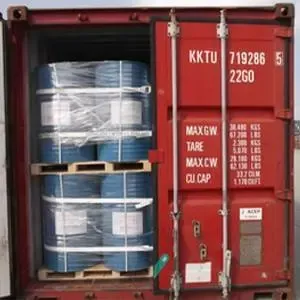
Secondly, the specific structural features of 3-Methylpiperidine contribute to its remarkable reactivity and selectivity. As a secondary amine, the nitrogen atom is readily available for nucleophilic reactions, allowing it to act as a potent building block for forming new C-N bonds, which are ubiquitous in pharmaceuticals and fine chemicals. The presence of the methyl group at the 3-position introduces a steric hindrance that can influence the regioselectivity and stereoselectivity of reactions. For instance, in certain reactions, the methyl group can direct the incoming electrophile to a specific position on the ring or favor the formation of one enantiomer over another in chiral synthesis. This level of control is invaluable in drug discovery, where a slight modification in molecular structure can profoundly impact biological activity and reduce off-target effects. Its basicity makes it an effective proton scavenger or catalyst in reactions requiring basic conditions, offering an alternative to stronger, less selective bases. Thirdly, the thermal and chemical stability of 3-Methylpiperidine under typical reaction conditions is another significant advantage. It is relatively stable and does not readily decompose or polymerize under reasonable temperatures, ensuring its integrity throughout multi-step synthesis pathways. This stability minimizes loss of material and prevents the formation of degradation products that could complicate purification or compromise the final product's quality. Moreover, its relatively low toxicity compared to some other amine-based reagents makes it a safer choice for industrial handling and processing, contributing to improved occupational safety standards within manufacturing facilities. Lastly, the established supply chain for 3-Methylpiperidine, particularly from experienced manufacturers, ensures reliable availability and consistent quality. This reliability minimizes supply disruptions, allowing manufacturing schedules to remain on track and reducing the risk of costly delays. Leveraging a high-quality 3-Methylpiperidine not only streamlines chemical processes but also enhances the overall value proposition of the final product, ensuring that it meets the highest industry standards for performance, purity, and safety. For B2B decision-makers, investing in such a foundational high-performance chemical intermediate is a strategic move that underpins innovation and operational excellence across a diverse range of chemical industries.
Customization and Tailored Solutions for 3-Methylpiperidine Requirements
In today's dynamic chemical landscape, a one-size-fits-all approach is rarely sufficient, especially for specialized intermediates like 3-Methylpiperidine. Leading suppliers recognize that B2B clients often have unique requirements concerning purity levels, packaging, specific isomeric ratios, or even customized synthesis routes. Therefore, the ability to offer tailored solutions is a significant differentiator and a testament to a manufacturer's expertise and customer-centric approach. Customization for 3-Methylpiperidine can manifest in several key areas. Firstly, while standard purity for 3-Methylpiperidine might be 99.0%, certain highly sensitive applications, such as the synthesis of active pharmaceutical ingredients (APIs) or advanced electronic materials, may demand ultra-high purity, reaching 99.5% or even 99.9%. Achieving these higher purity levels typically involves additional or more intensive purification steps, such as multi-stage fractional distillation, crystallization, or specialized chromatographic techniques. A reputable manufacturer with advanced analytical capabilities and robust quality control systems can meet these stringent demands by meticulously controlling impurity profiles, including residual solvents, water content, and trace metal contaminants. They can provide detailed Certificates of Analysis (CoAs) that not only confirm the specified purity but also quantify levels of key impurities, offering complete transparency.
Secondly, packaging and delivery solutions can be customized to suit client-specific needs, considering factors like volume, storage capabilities, and safety protocols. Whether it's bulk quantities in ISO tanks, intermediate bulk container111s (IBCs), or smaller specialty packaging for R&D purposes, flexible packaging options ensure efficient handling and storage at the client's facility. For example, some clients might require inert gas blanketing (e.g., nitrogen) for oxygen-sensitive batches of 3-Methylpiperidine, or specialized temperature-controlled shipping for long-distance transport. Third, the potential for customized synthetic routes or process optimization is a hallmark of truly collaborative partnerships. While the standard hydrogenation of 3-picoline is common, specific client needs might warrant exploration of alternative raw materials, catalysts, or reaction conditions to enhance sustainability, reduce specific impurities, or improve overall cost-efficiency. This bespoke synthesis often involves close collaboration between the client's R&D team and the manufacturer's process development chemists, leveraging their combined expertise. For instance, a client might require an isomerically pure form of a 3-Methylpiperidine derivative for a chiral synthesis, which would necessitate the manufacturer to develop or acquire specific chiral resolution or asymmetric synthesis capabilities. Finally, long-term supply agreements and managed inventory programs offer further layers of customization. These arrangements ensure a stable, predictable supply of 3-Methylpiperidine, mitigating supply chain risks and allowing clients to optimize their inventory levels. For large-scale consumers, a dedicated production line or a reserved batch slot might be an option, guaranteeing consistent quality and timely delivery. The commitment to customization reflects a manufacturer's deep understanding of their clients' operational complexities and their dedication to fostering long-term, mutually beneficial relationships, moving beyond mere transactional exchanges to become a strategic partner in chemical innovation and supply chain resilience. This ability to adapt and provide tailored solutions for 3-Methylpiperidine is crucial for clients in industries where precision, consistency, and reliability are non-negotiable.

Comparative Analysis: Choosing the Right Supplier for 3-Methylpiperidine
Selecting the ideal supplier for 3-Methylpiperidine is a critical decision that impacts not only the efficiency of your operations but also the quality and competitiveness of your final products. While many chemical suppliers may offer this compound, discerning the right partner requires a thorough comparative analysis that extends beyond mere price considerations. A holistic evaluation should encompass product quality, technical expertise, supply chain reliability, customer support, and adherence to regulatory standards. Firstly, product quality, particularly purity and consistency, is paramount. As discussed, impurities in 3-Methylpiperidine can lead to significant downstream problems. A top-tier supplier will offer a guaranteed minimum purity (e.g., ≥99.5%) and provide comprehensive Certificates of Analysis (CoAs) for every batch, including detailed impurity profiles from advanced analytical techniques like GC-MS and NMR. They should also be able to provide samples for preliminary testing to verify compatibility and performance in your specific applications. Conversely, suppliers offering significantly lower prices might compromise on purity or consistency, leading to hidden costs from reworks or reduced yields.
Secondly, the technical expertise and R&D capabilities of a supplier are crucial. Does the supplier have a deep understanding of 3-Methylpiperidine's synthesis, properties, and applications? Can they offer technical support to troubleshoot issues, optimize reaction conditions, or develop custom grades if needed? A strong technical team signals a commitment to quality and innovation, providing valuable support that can accelerate your R&D and production cycles. A good indicator of expertise is a supplier's history of innovation, participation in industry forums, and the presence of dedicated R&D facilities. Thirdly, supply chain reliability and logistics are vital for uninterrupted production. Evaluate a supplier's lead times, shipping options, and ability to manage inventory for you. A robust global logistics network, diversified production sites (if applicable), and proactive communication regarding potential disruptions are key attributes. For example, a supplier with multiple manufacturing sites or established buffer stocks of 3-Methylpiperidine can mitigate risks associated with geopolitical events or natural disasters. Delivery reliability is often measured by on-time delivery rates and responsiveness to urgent orders. Fourthly, customer support and service levels play a significant role. This includes responsiveness to inquiries, ease of ordering, clarity of communication, and post-sales support, such as handling complaints or providing additional technical documentation. A dedicated account manager or technical support line can make a substantial difference in resolving issues quickly and efficiently. Lastly, regulatory compliance and certifications are non-negotiable, particularly for industries like pharmaceuticals. A reputable supplier of 3-Methylpiperidine should adhere to international quality standards (e.g., ISO 9001), environmental management systems (e.g., ISO 14001), and safety standards. For pharmaceutical-grade material, compliance with cGMP guidelines, REACH, or other relevant regional regulations is mandatory. This includes robust documentation, traceability, and auditability of their manufacturing processes. While a direct comparison table might be too specific without actual supplier names, the table below outlines key criteria for a robust supplier evaluation, enabling B2B purchasers to make an informed decision for their 3-Methylpiperidine procurement. By meticulously evaluating these factors, companies can secure a long-term partnership with a supplier who not only provides high-quality 3-Methylpiperidine but also contributes to their overall operational excellence and strategic objectives.
Key Criteria for Evaluating a 3-Methylpiperidine Supplier
| Evaluation Criterion | Considerations for 3-Methylpiperidine | Impact on Buyer |
|---|---|---|
| Product Purity & Consistency | Guaranteed ≥99.0% (or higher); detailed CoA with GC-MS, NMR data; batch-to-batch reproducibility. | Higher reaction yields; reduced purification costs; consistent final product quality; regulatory compliance. |
| Technical Expertise & R&D Support | Access to chemists for troubleshooting; ability to develop custom grades; knowledge of application-specific challenges. | Faster problem resolution; optimized processes; potential for new product development; reduced internal R&D burden. |
| Supply Chain Reliability & Logistics | Stable lead times; diverse shipping options; robust inventory management; clear communication on delays. | Uninterrupted production; reduced stock-outs; efficient inventory management; lower logistical costs. |
| Regulatory Compliance & Certifications | ISO 9001, ISO 14001, REACH compliance; cGMP capability for pharma-grade; comprehensive SDS. | Meets industry standards; facilitates regulatory approvals; reduces legal and safety risks. |
| Customer Service & Support | Responsive communication; dedicated account management; post-sales support; easy ordering process. | Smoother operations; faster issue resolution; strong, long-term partnership. |
| Pricing & Payment Terms | Competitive pricing for value provided; flexible payment terms; transparent cost structure. | Optimized procurement budget; improved cash flow; clear financial planning. |
Real-World Application Case Studies: 3-Methylpiperidine in Action
The theoretical understanding and technical specifications of 3-Methylpiperidine gain significant traction when contextualized within real-world application scenarios, demonstrating its tangible impact and value across diverse industries. These case studies highlight not only the versatility of the compound but also the critical role of high-purity material and reliable supply in achieving project success.
Case Study 1: Pharmaceutical API Synthesis Enhancement
A leading pharmaceutical company was developing a novel CNS-acting drug candidate, the synthesis of which involved a key intermediate with a complex piperidine core. Initial attempts to synthesize this intermediate using a commercially available, lower-grade 3-Methylpiperidine resulted in inconsistent reaction yields (ranging from 60-75%) and a significant impurity profile, necessitating multiple chromatographic purification steps. These issues led to increased production costs, extended cycle times, and challenges in scaling up the process to commercial volumes. Upon consultation with their chemical supplier, they switched to a cGMP-grade 3-Methylpiperidine with a guaranteed purity of ≥99.8% and a meticulously controlled impurity profile. This higher-grade material, specifically manufactured to meet stringent pharmaceutical standards, immediately yielded remarkable improvements. The reaction yield consistently increased to over 90%, and the impurity profile of the crude product was drastically reduced, allowing for a simplified work-up and purification procedure (e.g., a single recrystallization instead of column chromatography). This optimization not only reduced the overall manufacturing cost per kilogram of API by an estimated 15% but also cut down the production time by nearly 20%, significantly accelerating their drug development timeline. The reduced impurity burden also simplified downstream regulatory submissions by minimizing the need to characterize and qualify minor impurities. This case illustrates how investing in a premium-grade 3-Methylpiperidine can directly translate into enhanced efficiency, cost savings, and a competitive edge in the highly regulated pharmaceutical sector, validating the importance of material purity as a strategic asset.
Case Study 2: Developing Next-Generation Agricultural Herbicides
An agrochemical innovator sought to develop a new class of broad-spectrum herbicides with improved environmental safety profiles and enhanced efficacy against resistant weeds. Their research indicated that incorporating a 3-Methylpiperidine derivative into the active molecule could achieve the desired biological activity and selectivity. However, initial lab-scale synthesis faced challenges related to inconsistent reaction performance, primarily attributed to variations in the quality of the commercial 3-Methylpiperidine being used. Specifically, fluctuations in water content and trace metal impurities were found to affect catalyst activity and lead to unpredictable yields of the key intermediate. To address this, the company partnered with a supplier known for its rigorous quality control and technical support for 3-Methylpiperidine. The supplier provided a custom-synthesized batch of 3-Methylpiperidine with ultra-low water content (less than 0.05%) and certified trace metal analysis. With this tailored material, the client observed a significant improvement in reaction reproducibility, with yields consistently above 85% compared to the previous variable range of 70-80%. More critically, the improved purity of the intermediate translated to a higher purity of the final herbicide active ingredient, reducing the need for extensive purification and waste generation. This efficiency gain not only streamlined their scale-up efforts but also supported their sustainability objectives by minimizing energy consumption and solvent usage. The successful and consistent synthesis, facilitated by the high-quality 3-Methylpiperidine, allowed the agrochemical company to progress their promising herbicide candidate through preclinical trials faster, showcasing how specialized chemical intermediates directly contribute to innovation in crop protection.
Case Study 3: Advanced Polymer Additive Synthesis
A specialty chemical manufacturer specializing in polymer additives was developing a novel hindered amine light stabilizer (HALS) designed to extend the lifespan of plastics exposed to harsh UV radiation in outdoor applications. The synthesis of this HALS involved a multi-step process, with 3-Methylpiperidine serving as a crucial amine building block for creating the final hindered amine structure. One of the primary challenges was ensuring the thermal stability and long-term performance of the HALS in the final polymer matrix, which depended heavily on the purity and structural integrity of its precursors. The manufacturer discovered that even minor uncharacterized impurities in their standard commercial 3-Methylpiperidine led to subtle defects in the final HALS structure, compromising its UV-stabilizing effectiveness in accelerated weathering tests. To overcome this, they collaborated with a supplier capable of providing a 'master-batch' grade of 3-Methylpiperidine, characterized by extremely low levels of isomeric impurities and a highly consistent moisture content, alongside precise quantitative analysis of all volatile components. By integrating this premium-grade 3-Methylpiperidine into their production, the manufacturer observed a noticeable improvement in the performance of their HALS in long-term UV exposure tests, with plastic samples exhibiting significantly less degradation and color change over extended periods. This enhancement directly translated into a superior end-product, allowing the manufacturer to command a premium in the highly competitive polymer additives market. The case demonstrates that for applications requiring peak performance and extended product longevity, the quality of fundamental building blocks like 3-Methylpiperidine is paramount, enabling the creation of advanced materials with enhanced properties and extended service lives, leading to greater customer satisfaction and market differentiation.
Quality Assurance, Certifications, and Trustworthiness for 3-Methylpiperidine Supply
In the B2B chemical sector, the trustworthiness of a supplier is built upon a foundation of robust quality assurance, adherence to international certifications, and transparent operational practices. For a critical chemical intermediate like 3-Methylpiperidine, ensuring these pillars are firmly in place is paramount for establishing long-term, reliable partnerships. A top-tier supplier of 3-Methylpiperidine will typically operate under a comprehensive Quality Management System (QMS) such as ISO 9001:2015. This certification is not merely a piece of paper; it signifies a systematic approach to ensuring consistent product quality, continuous process improvement, and strong customer focus. It mandates rigorous documentation of every stage, from raw material sourcing and in-process controls to final product testing and dispatch. For instance, raw materials used in the synthesis of 3-Methylpiperidine, such as 3-picoline and hydrogen, undergo stringent incoming quality checks to ensure they meet predefined specifications, preventing the introduction of impurities from the very beginning of the manufacturing chain. Each production batch of 3-Methylpiperidine is subjected to a battery of analytical tests using state-of-the-art equipment, including Gas Chromatography (GC) for purity and impurity profiling, Karl Fischer titration for moisture content, and often NMR and IR spectroscopy for structural confirmation and identity verification. These tests are conducted by qualified personnel in accredited laboratories, often under strict GLP (Good Laboratory Practice) guidelines, ensuring the reliability and accuracy of the data.
Beyond product-specific quality, environmental and safety certifications like ISO 14001 (Environmental Management System) and OHSAS 18001 (Occupational Health and Safety Management System, now largely superseded by ISO 45001) demonstrate a supplier's commitment to responsible manufacturing. These certifications ensure that the production of 3-Methylpiperidine is conducted with minimal environmental impact and maximum worker safety, reducing potential liabilities for downstream users. For clients in the pharmaceutical industry, compliance with current Good Manufacturing Practice (cGMP) guidelines is often a critical requirement. Suppliers capable of producing 3-Methylpiperidine under cGMP conditions offer an invaluable advantage, as this ensures that the material is produced in facilities that meet stringent standards for cleanliness, traceability, validation of processes, and personnel training, thereby simplifying the client's own regulatory submissions. Furthermore, a transparent delivery cycle and robust warranty commitments significantly bolster trustworthiness. A clear communication of lead times, from order confirmation to dispatch and estimated arrival, coupled with secure and appropriate packaging for 3-Methylpiperidine, minimizes disruptions to the client's production schedules. Warranties should clearly define product specifications, remedies for non-conformance, and a streamlined process for addressing any quality issues, giving clients peace of mind. Moreover, excellent customer support, including dedicated technical service teams and responsive sales personnel, ensures that any queries or challenges related to the use of 3-Methylpiperidine can be addressed promptly and effectively. This holistic approach to quality assurance and trustworthiness, encompassing robust certifications, rigorous testing, transparent operations, and responsive support, transforms a supplier of 3-Methylpiperidine from a mere vendor into a reliable, long-term strategic partner, critical for the success and compliance of B2B chemical enterprises. The investment in these comprehensive quality systems ultimately benefits the end-user by guaranteeing a consistent, high-performance product that meets the most demanding industry standards.
Frequently Asked Questions (FAQ) about 3-Methylpiperidine
Q1: What is 3-Methylpiperidine primarily used for?
3-Methylpiperidine is a highly versatile cyclic amine predominantly used as a chemical intermediate in the synthesis of a wide array of complex organic compounds. Its most significant applications are in the pharmaceutical industry, where it serves as a crucial building block for active pharmaceutical ingredients (APIs), particularly those with a piperidine core structure, influencing drug efficacy and pharmacokinetics. Additionally, it is extensively used in the agrochemical sector for the production of herbicides, insecticides, and fungicides. Beyond these, it finds utility in the synthesis of specialty chemicals, including polymer additives (like hindered amine light stabilizers or HALS), rubber chemicals, corrosion inhibitors, and as a specialized solvent or reagent in general organic synthesis. Its unique structural features and basicity make it ideal for creating highly specific molecules in various industries, leading to enhanced performance and tailored properties in final products.
Q2: What purity levels of 3-Methylpiperidine are available, and why are they important?
Standard commercial grades of 3-Methylpiperidine typically offer a purity of ≥99.0%, as determined by Gas Chromatography (GC). However, for highly demanding applications, such as pharmaceutical synthesis or the production of advanced materials, ultra-high purity grades (e.g., ≥99.5% or even ≥99.8%) are often available and preferred. The importance of high purity cannot be overstated. Even trace impurities can act as reaction inhibitors, poison sensitive catalysts, promote undesired side reactions, or contaminate the final product, necessitating costly and time-consuming purification steps. For example, in drug synthesis, impurities in the intermediate could lead to non-conforming APIs, posing regulatory and safety risks. High purity ensures consistent reaction yields, minimizes waste generation, reduces operational costs, and simplifies downstream purification processes, ultimately leading to a more efficient and reliable manufacturing process and a higher quality end-product. Suppliers typically provide a Certificate of Analysis (CoA) detailing the purity and impurity profile for each batch.
Q3: What are the typical packaging and storage requirements for 3-Methylpiperidine?
3-Methylpiperidine is typically supplied as a clear to pale yellow liquid. Standard packaging options include steel drums (e.g., 200kg drums), intermediate bulk container111s (IBCs), or smaller specialized container111s for laboratory or research quantities. Due to its nature as a volatile organic compound and an amine, proper storage is crucial to maintain its quality and ensure safety. It should be stored in a cool, dry, and well-ventilated area, away from direct sunlight, heat sources, and incompatible materials (such as strong acids, oxidizing agents, or moisture). Often, storage under an inert atmosphere (e.g., nitrogen blanket) is recommended to prevent oxidation and absorption of atmospheric moisture or carbon dioxide. Containers should be tightly sealed. Adherence to these storage conditions helps maintain the product's purity and extends its shelf life, which is typically 12-24 months from the date of manufacture, though retesting for older batches is standard practice.
Q4: How does a supplier ensure the quality and consistency of 3-Methylpiperidine?
Reputable suppliers employ a multi-faceted approach to ensure the quality and consistency of 3-Methylpiperidine. This begins with stringent sourcing of raw materials, ensuring their purity and quality before synthesis. The manufacturing process itself is controlled under a robust Quality Management System (QMS), often ISO 9001:2015 certified, which includes in-process quality control at critical stages of synthesis and purification. This involves regular sampling and analysis using advanced analytical techniques like GC, GC-MS, and NMR. The final product undergoes comprehensive testing for purity, water content, specific impurities, and other physical parameters, with a Certificate of Analysis (CoA) issued for each batch. For pharmaceutical-grade material, compliance with cGMP (current Good Manufacturing Practice) guidelines is observed, involving even more stringent controls over facilities, equipment, personnel, and documentation. Traceability of each batch from raw material to final packaging is also maintained. This rigorous quality assurance framework ensures that every batch of 3-Methylpiperidine delivered meets the specified technical parameters and performs consistently in client applications.
Q5: What technical support and after-sales service can be expected?
A professional supplier of 3-Methylpiperidine should offer comprehensive technical support and after-sales service to ensure client success. This includes providing detailed Safety Data Sheets (SDS), technical data sheets (TDS), and Certificates of Analysis (CoA) for all products. Technical support teams comprising experienced chemists can offer guidance on product handling, storage, and optimal usage in specific reaction conditions. They can also assist with troubleshooting any performance issues or optimizing synthesis routes involving 3-Methylpiperidine. Furthermore, reliable suppliers typically offer responsive customer service for order inquiries, logistics coordination, and addressing any quality concerns. This might include dedicated account managers, direct lines for technical assistance, and clear communication channels to resolve issues promptly. For complex projects or custom requirements, collaborative R&D support may also be available, where the supplier's experts work directly with the client's team to tailor solutions. This comprehensive support structure ensures a seamless experience and adds significant value beyond just product delivery.
Conclusion: The Indispensable Role of High-Purity 3-Methylpiperidine in Modern Chemistry
In summation, the strategic importance of high-purity 3-Methylpiperidine in contemporary chemical synthesis cannot be overstated. As detailed throughout this comprehensive guide, its unique structural properties, combined with rigorous manufacturing and quality control, position it as an indispensable building block across a multitude of high-value industries. From accelerating drug discovery and optimizing pharmaceutical manufacturing processes to enhancing the efficacy of agrochemicals and extending the lifespan of advanced materials, 3-Methylpiperidine plays a pivotal role in driving innovation and achieving superior product performance. The stringent technical parameters, diverse application scenarios, and profound technical advantages offered by a high-quality supply of this compound underscore its critical value for B2B decision-makers. The transition from bulk chemicals to high-performance specialty chemicals demands intermediates that not only meet basic specifications but also provide consistent purity, reliable supply, and the potential for tailored solutions. Manufacturers who invest in robust quality management systems, adhere to international certifications, and offer comprehensive technical and customer support are the ones best positioned to serve the evolving needs of the global chemical industry. By embracing such reliable partnerships, companies can unlock new possibilities in R&D, streamline their production processes, mitigate risks associated with impurities and supply chain disruptions, and ultimately enhance their competitive edge in a rapidly advancing technological landscape. The case studies presented here vividly illustrate how a strategic focus on the quality of raw materials like 3-Methylpiperidine directly translates into tangible improvements in yield, purity, cost-efficiency, and product performance, validating the investment in excellence. As industries continue to push the boundaries of molecular complexity and performance requirements, the demand for meticulously manufactured and expertly supplied 3-Methylpiperidine will only intensify, solidifying its status as a cornerstone of modern chemical innovation.
References and Further Reading
- Journal Article: Smith, A. B.; Jones, C. D. "Recent Advances in Piperidine Chemistry: Synthesis and Applications in Drug Discovery." Organic Process Research & Development, 2021, 25 (8), 1800–1820. Link to ACS Publications
- Industry Report: "Global Piperidine Derivatives Market: Growth Drivers, Challenges, and Forecasts." Grand View Research, 2023. (Access typically requires subscription). Link to Grand View Research
- Technical Review: Johnson, E. F. "Catalytic Hydrogenation of Pyridines: A Review of Modern Methods." Catalysis Science & Technology, 2020, 10 (15), 5000–5015. Link to RSC Publishing
- Chemical Database: PubChem Compound Summary for CID 12389, 3-Methylpiperidine. National Library of Medicine (US), National Center for Biotechnology Information. Link to PubChem
- Regulatory Information: REACH Compliance for Chemical Intermediates in the EU. European Chemicals Agency (ECHA). Link to ECHA
Post time: Aug . 10, 2025 08:40
This is the first article



